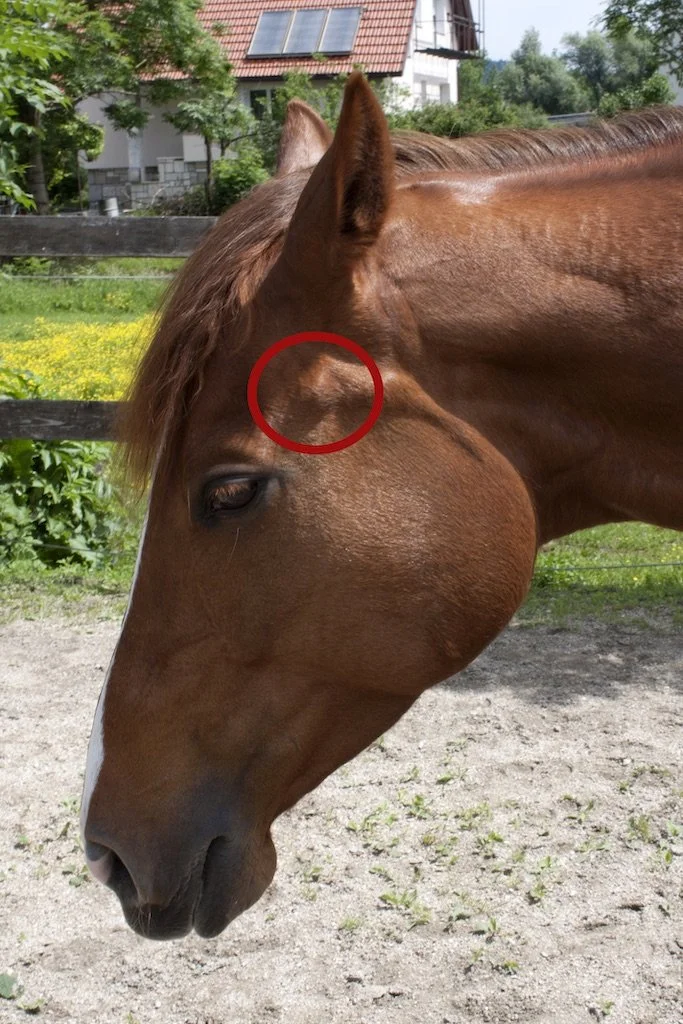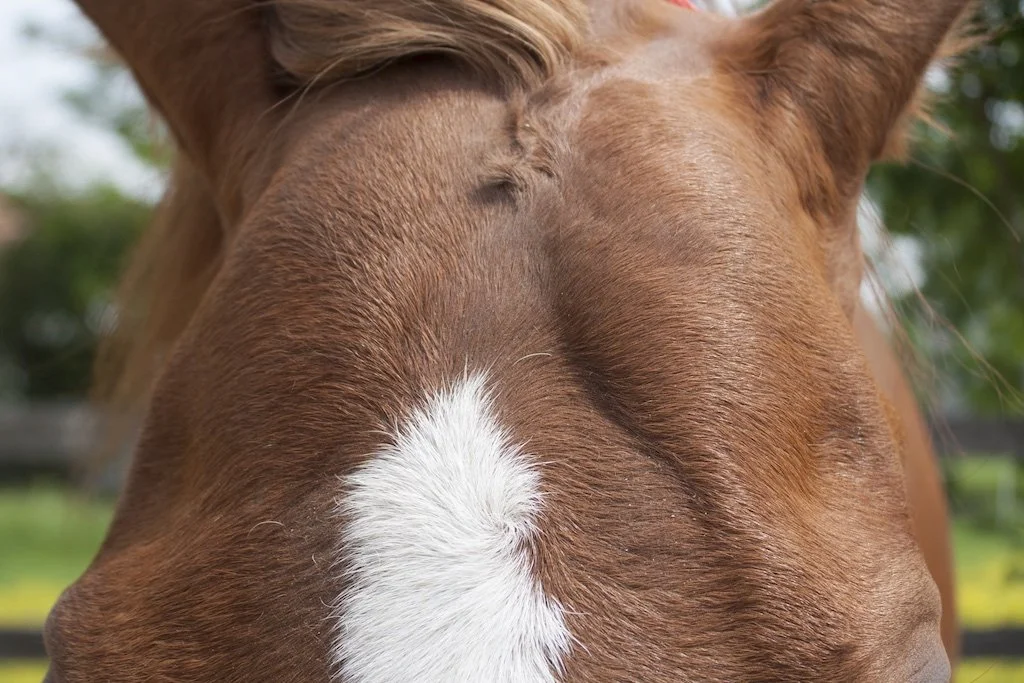Try this technique for TMJ discomfort
he TMJ area can b very sensitive, so make sure you are very gentle when applying these techniques. If the horse is not comfortable with being touched here, don't force it.
The temporomandibular joint (TMJ) is the joint that connects the horse's lower jaw to the skull. It is a small, but incredibly important joint that plays a big role not only in chewing, but also in balance and movement. I like to think of the TMJ as being best friends with the poll and the teeth. They work together and share any dysfunction that might befall each of them. When we have TMJ issues, it is always necessary to check for poll issues and dental issues as well.
The TMJ is a very important joint, not only for chewing, but overall movement and balance as well.
TMJ issues are quite common in horses and can happen due to many reasons – dental imbalance, poll tightness, an ill fitting bridle or halter, improper riding techniques, stress and many more. The TMJ responds really well to gentle bodywork techniques, so today I want to share with you three moves you can do to bring some comfort to the TMJs.
An uneven development of the temporal muscles can be an indicator of TMJ dysfunction. If you notice this, make sure to consult your equine dentist as well.
1.
Ear circles. The fascia surrounding the ears is tightly connected to the fascia surrounding the TMJ so a great way to release this area (especially if the horse is sensitive to touch over the TMJs) is to work with the ears. When performing any kind of moves on the ears, keep in mind that it is a sensitive area, so be very, very gentle and always make sure you have the horse's consent. Gently hold the base of the ear with your hand and make small circles in both directions. You can experiment with the size of the circles, but make sure to go slow.
2.
Ear pull. When you're finished making circles, try gently pulling the ear to the side. This should be done very, very gently. We don't want to be yanking on our horse's ear, but we do want a sustained pull to slowly release the fascia. Make sure to hold the base of the ear, not the tip and don't squeeze too much with your hand.
3.
Working on the TMJ fascia. Locate the TMJ and gently lay your fingers over it. Then gently start to move the skin over the joint. Apply just enough pressure for the skin to slide over the underlying tissue, bt not too much pressure as this can be a very sensitive area. Move the skin upwards and hold for about 30 seconds or until you feel the tissue underneath your hands release. Then do the same while moving the skin downwards, left and right. You can also try moving the skin around the joint in circles.
Remember, the gentler you work this area, the better the results will be. This is a great set of techniques you can do after a visit from the dentist to release any tension that might have been caused by keeping the mouth open for longer than usual. If your horse is very sensitive in this area, make sure you get the poll and teeth checked out.


